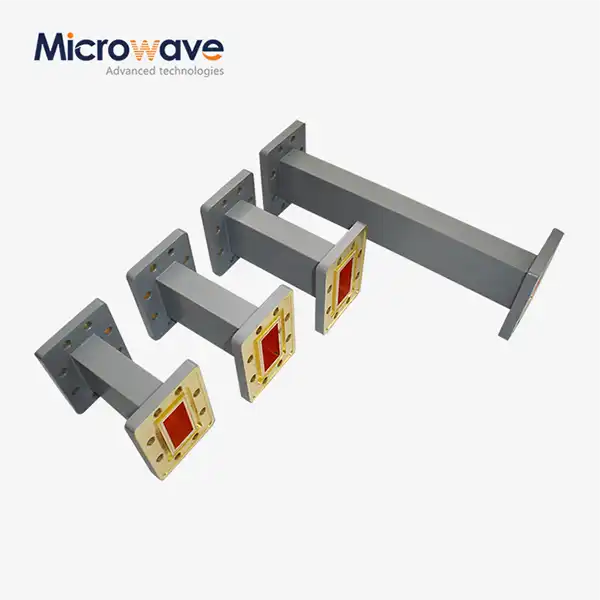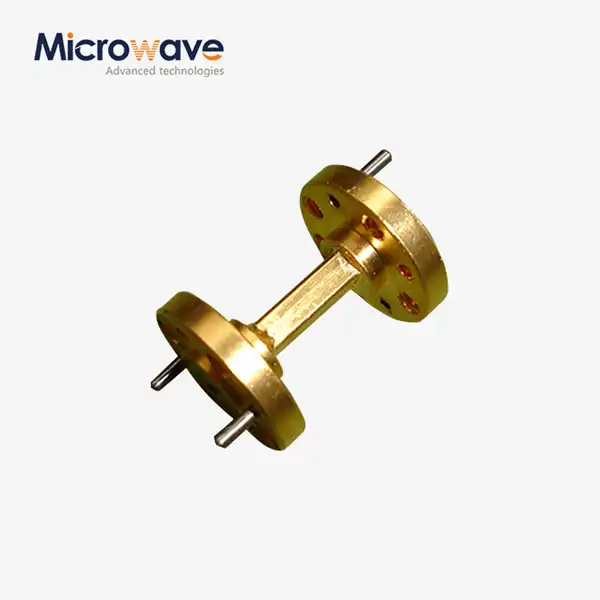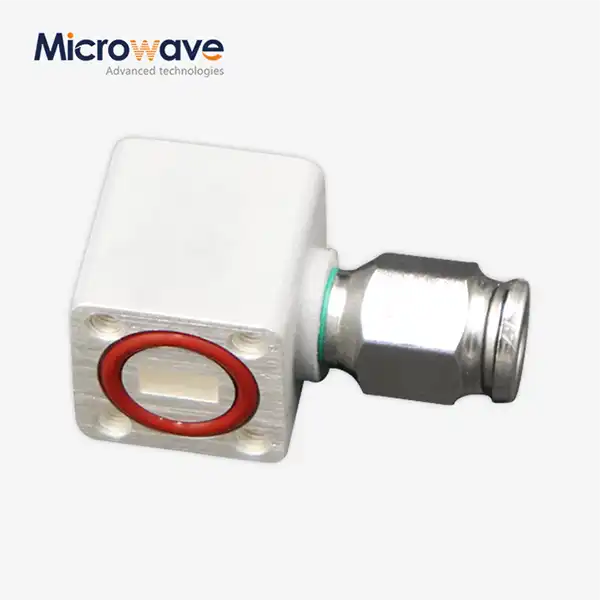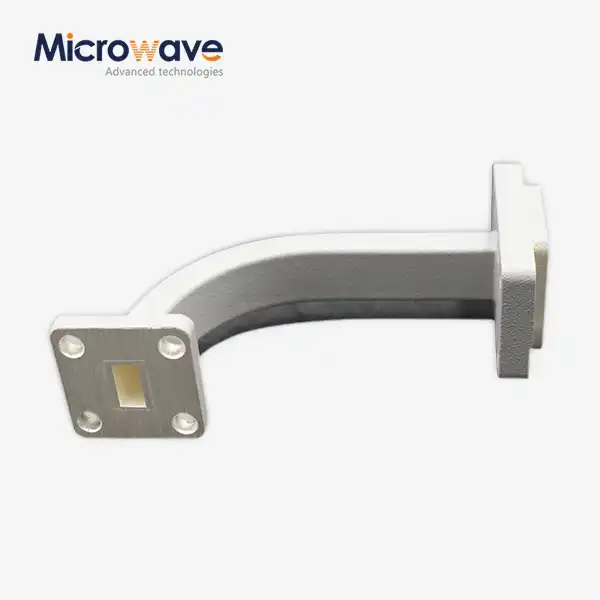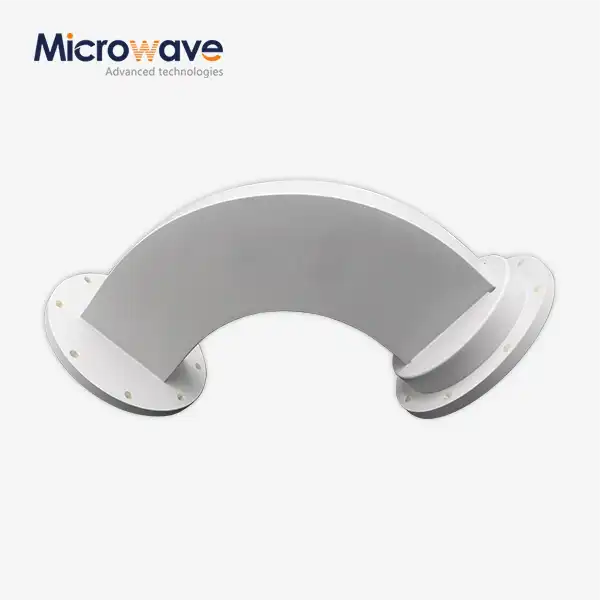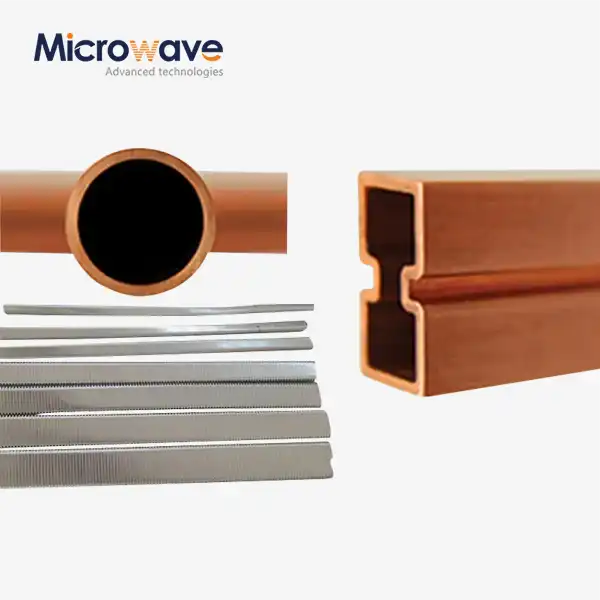What Materials Are Typically Used in the Manufacturing of Waveguide Tubes?
Waveguide tubes are fundamental components in microwave and radio frequency systems, serving as the pathways through which electromagnetic signals travel with minimal loss. When considering the materials used in waveguide tube manufacturing, engineers must balance electrical conductivity, thermal performance, weight considerations, and cost-effectiveness. Typically, waveguide tubes are manufactured using high-conductivity metals such as aluminum, copper, and brass, with each material offering distinct advantages for different applications. Advanced Microwave Technologies Co., Ltd. specializes in producing Waveguide Tubes made from premium materials that ensure optimal signal transmission across a wide frequency range from WR2300 to WR10, supporting both commercial and military applications.
Primary Materials Used in Waveguide Tube Construction
Copper as a Premium Waveguide Material
Copper stands as one of the most highly valued materials for manufacturing high-performance Waveguide Tubes, primarily due to its exceptional electrical conductivity. With a conductivity value of approximately 5.96 × 10^7 S/m, copper waveguides minimize signal attenuation, allowing electromagnetic waves to propagate with minimal energy loss. This characteristic makes copper Waveguide Tubes particularly valuable in applications where signal integrity is paramount, such as in satellite communication systems where every decibel of signal matters. Advanced Microwave Technologies Co., Ltd. utilizes high-grade copper in many of their Waveguide Tube products, especially for applications requiring optimal performance in the microwave frequency range. Despite its higher cost compared to aluminum alternatives, copper waveguides deliver superior performance by maintaining signal strength over longer distances. For critical systems operating at high frequencies up to 110 GHz, the enhanced conductivity of copper waveguides often justifies the additional material expense by ensuring more efficient system operation. Additionally, copper's excellent thermal conductivity allows these Waveguide Tubes to dissipate heat effectively during high-power transmission, making them suitable for applications that demand sustained performance under significant power loads.
Aluminum for Lightweight Applications
Aluminum has emerged as a popular material choice for Waveguide Tube manufacturing due to its exceptional balance of performance and practicality. With approximately one-third the weight of copper while still offering approximately 61% of copper's conductivity, aluminum provides an excellent compromise for many microwave applications where weight considerations are significant. This makes aluminum Waveguide Tubes particularly valuable in aerospace and mobile communication systems where every gram matters. Advanced Microwave Technologies Co., Ltd. supplies aluminum waveguides in various wall thicknesses (standard, thin, and heavy) to accommodate diverse application requirements. The naturally forming oxide layer on aluminum surfaces provides inherent corrosion resistance, extending the operational lifespan of these components in challenging environments without requiring additional protective coatings. While aluminum does exhibit slightly higher signal loss than copper, the difference becomes negligible in many practical applications, especially at lower frequencies or over shorter distances. For systems where weight reduction translates directly to operational benefits or cost savings, such as in satellite payloads or portable military communication equipment, aluminum Waveguide Tubes represent the optimal material choice, delivering reliable performance without imposing excessive weight penalties on the overall system design.
Brass and Bronze Alloys
Brass and bronze alloys represent an important category of materials used in Waveguide Tube manufacturing, offering unique properties that make them suitable for specialized applications. These copper-based alloys combine good electrical conductivity with enhanced mechanical properties and machinability compared to pure copper. Waveguide Tubes made from brass (typically copper-zinc alloys) provide excellent dimensional stability and are particularly well-suited for components requiring complex geometrical features or precision threading. Advanced Microwave Technologies Co., Ltd. utilizes brass alloys in applications where mechanical strength must be balanced with electrical performance, such as in connector interfaces or where the Waveguide Tube must withstand significant physical stress. Bronze alloys (copper-tin based) are sometimes employed in specialized Waveguide Tubes operating in corrosive environments, as they offer superior corrosion resistance compared to brass. This makes them valuable for maritime applications or installations exposed to harsh atmospheric conditions. While these alloys typically exhibit lower conductivity than pure copper (approximately 15-30% lower depending on the specific alloy composition), they compensate with improved mechanical properties, manufacturability, and in many cases, cost-effectiveness. For systems where the waveguide must perform both as a signal transmission medium and a structural component, these alloys provide an excellent compromise between electrical and mechanical requirements while maintaining compatibility with standard flanges and connection systems.
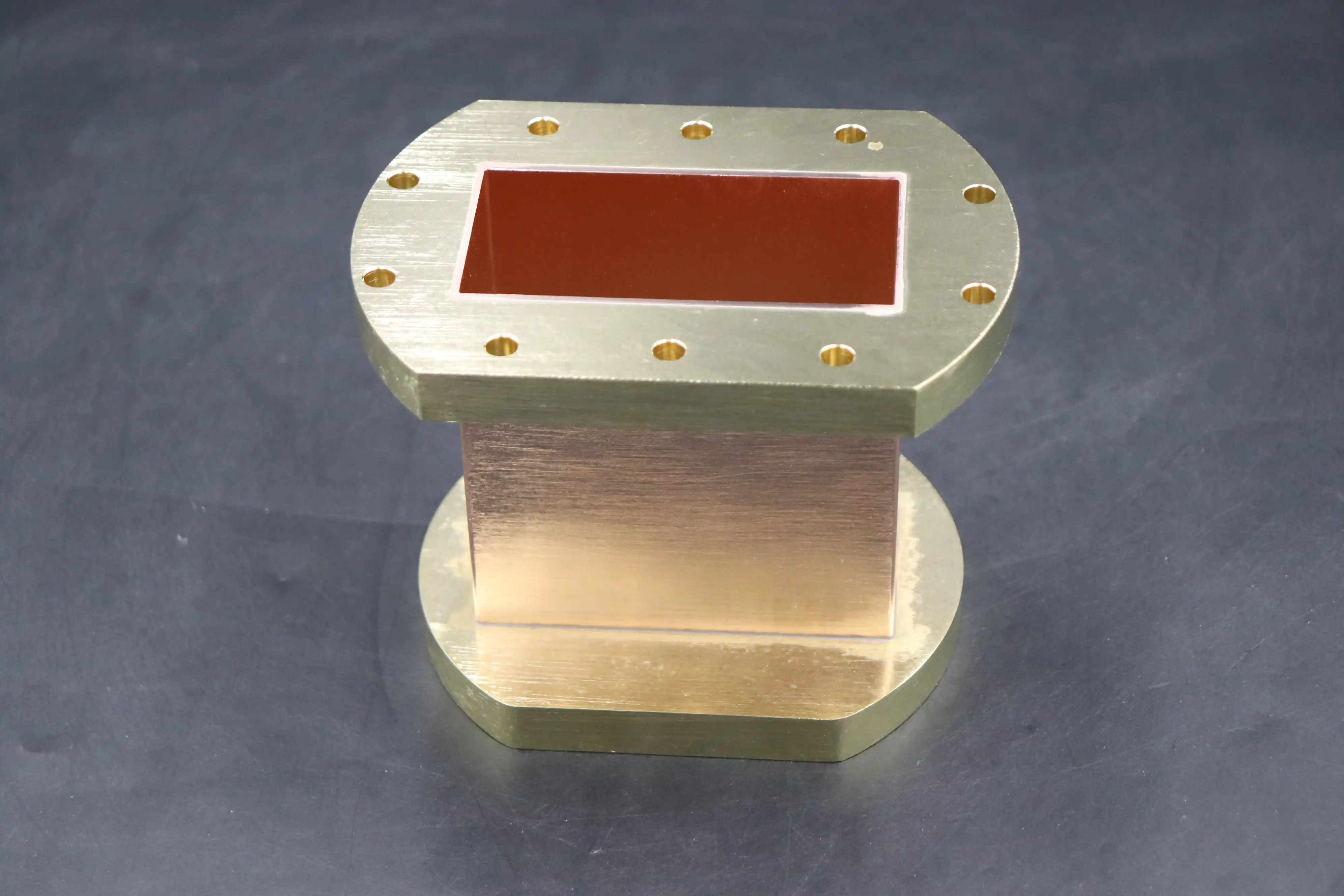
Surface Treatments and Coatings for Enhanced Performance
Silver Plating for Lower Insertion Loss
Silver plating represents one of the most effective surface treatments for enhancing Waveguide Tube performance, particularly in high-frequency applications where minimizing insertion loss is critical. With the highest electrical conductivity of any metal (approximately 6.30 × 10^7 S/m), silver plating reduces the skin effect losses that occur at microwave frequencies, where current flow is concentrated at the conductor's surface. Advanced Microwave Technologies Co., Ltd. offers silver-plated Waveguide Tubes as premium solutions for applications demanding the absolute lowest signal attenuation, such as in satellite ground station equipment or advanced radar systems. The typical silver plating thickness ranges from 2 to 10 microns, carefully controlled to ensure consistent performance while managing material costs. While the base Waveguide Tube may be manufactured from aluminum or copper, the silver coating creates a surface layer that interacts directly with the electromagnetic waves, reducing resistive losses during propagation. The performance improvement is particularly noticeable at frequencies above 18 GHz, where insertion loss reductions of 15-20% compared to unplated waveguides can be achieved. Despite the additional cost, silver-plated Waveguide Tubes often prove economical in the overall system context by improving efficiency, reducing the need for signal amplification, and enhancing overall system performance. For extremely demanding applications in the millimeter-wave range (30-110 GHz), silver plating becomes almost essential to maintain acceptable signal integrity through the waveguide structure.
Gold Plating for Corrosion Resistance
Gold plating represents a premium surface treatment option for Waveguide Tubes operating in challenging environmental conditions where corrosion resistance is paramount. Unlike silver, which tarnishes relatively quickly when exposed to air, gold remains chemically stable and maintains its excellent electrical properties over extended periods. Advanced Microwave Technologies Co., Ltd. provides gold-plated Waveguide Tubes for applications where long-term reliability without performance degradation is essential, such as in maritime radar systems, tropical installations, or aerospace applications. The gold layer, typically applied at thicknesses between 1.5 and 5 microns over a nickel barrier coating, provides exceptional protection against oxidation, sulfidation, and other chemical reactions that might otherwise compromise the waveguide's electrical performance. While gold's electrical conductivity (approximately 4.52 × 10^7 S/m) is somewhat lower than that of silver or copper, its chemical stability often makes it the preferred choice in environments where maintenance access is limited or impossible. For Waveguide Tube applications in satellite systems with operational lifespans exceeding 15 years, the initial investment in gold plating frequently proves economical by eliminating the need for replacement or servicing. Advanced Microwave's gold-plated waveguides undergo rigorous environmental testing, including salt spray exposure and temperature cycling, to verify their performance stability under extreme conditions. The combination of corrosion resistance and good electrical properties makes gold-plated Waveguide Tubes ideal for critical infrastructure applications where failure is not an option.
Tin and Nickel Coatings for Specialized Applications
Tin and nickel coatings provide cost-effective solutions for enhancing Waveguide Tube performance in specific operating environments. Tin plating, with its good solderability and moderate corrosion resistance, is frequently applied to Waveguide Tubes that require field assembly or modification. Advanced Microwave Technologies Co., Ltd. utilizes tin-plated surfaces on certain Waveguide Tube components to facilitate easier system integration while still maintaining acceptable electrical performance. The tin layer, typically 3-8 microns thick, offers protection against oxidation while remaining compatible with standard soldering techniques used during installation. Nickel plating, meanwhile, provides enhanced hardness and wear resistance, making it ideal for Waveguide Tubes subject to mechanical stress or repeated connection/disconnection cycles. With a hardness value approximately five times that of copper, nickel-plated surfaces resist deformation and maintain precise dimensional tolerances even after extensive handling. While neither material matches the electrical conductivity of silver or copper, they provide sufficient performance for many Waveguide Tube applications operating at frequencies below 18 GHz. Advanced Microwave's engineering team carefully considers the trade-offs between electrical performance, mechanical properties, and cost when recommending specific coating options for customer applications. For industrial systems exposed to moderate environmental challenges but requiring reliable long-term operation, these intermediate coating solutions strike an excellent balance between performance and economy. The company's ability to offer multiple surface treatment options across their Waveguide Tube product line enables customers to select precisely the right specification for their particular application requirements.
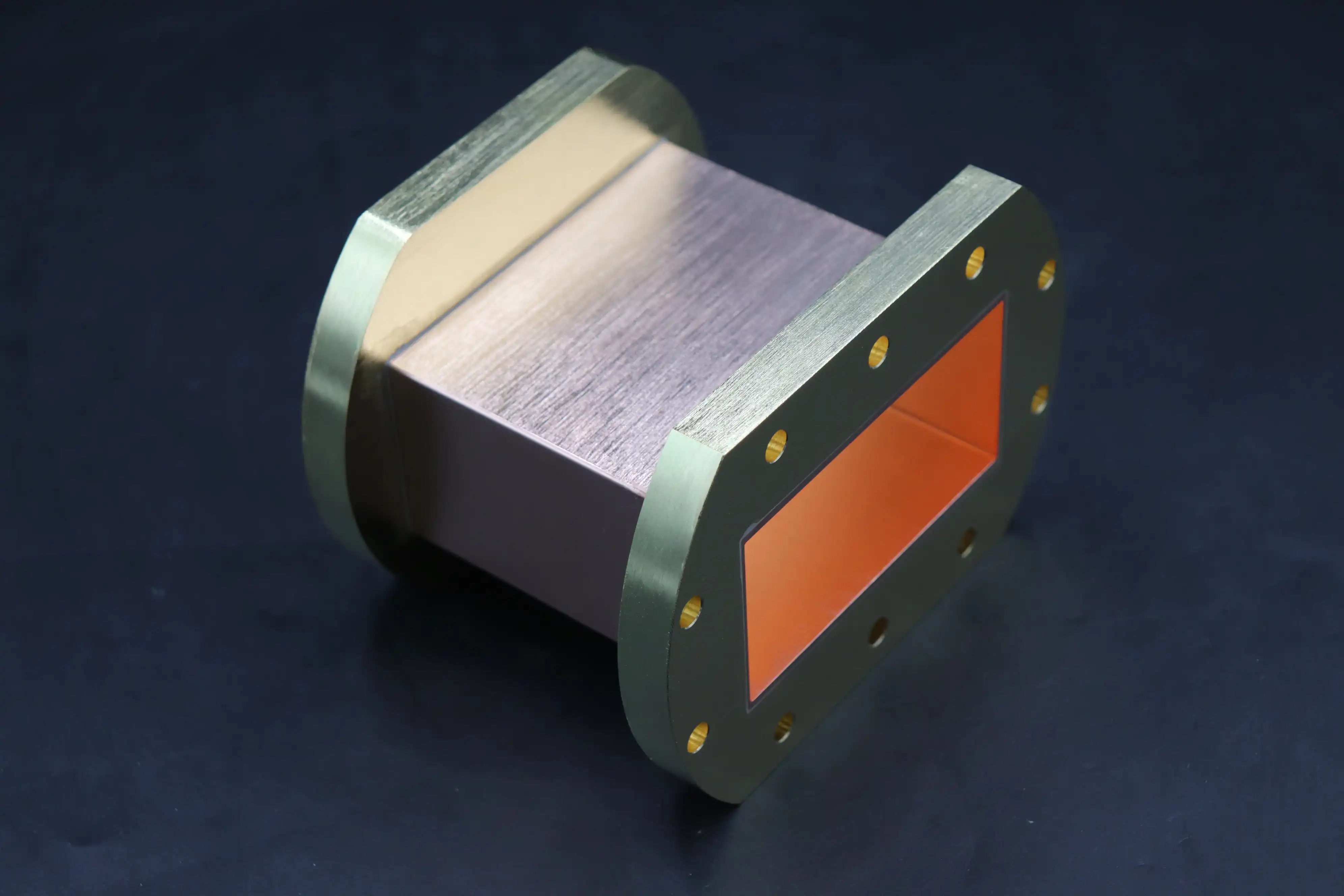
Manufacturing Considerations for Different Material Types
Precision Machining Techniques for Copper and Brass Waveguides
The manufacturing of copper and brass Waveguide Tubes demands specialized machining techniques to achieve the precise dimensional tolerances required for optimal microwave performance. Advanced Microwave Technologies Co., Ltd. employs state-of-the-art CNC machining centers dedicated to processing these highly conductive materials with tolerances typically maintained within ±0.025mm for critical dimensions. The machining process for copper Waveguide Tubes presents unique challenges due to the material's tendency to deform during cutting operations, requiring carefully controlled cutting speeds and tool geometries to prevent burr formation and maintain dimensional stability. The company's manufacturing facility utilizes specialized cutting tools with geometries specifically designed for non-ferrous metals, ensuring clean surfaces with minimal tool marks that could otherwise increase insertion loss in the finished Waveguide Tube. For complex waveguide components such as twists, bends, and transitions, Advanced Microwave employs multi-axis machining centers capable of producing these geometrically complex shapes while maintaining the critical internal dimensions that determine the waveguide's electrical performance. Each machined Waveguide Tube undergoes dimensional verification using coordinate measuring machines (CMMs) with measurement capabilities exceeding the manufacturing tolerances by a factor of three, ensuring that every product meets the specified dimensions. The company's expertise in machining these materials extends to wall thicknesses ranging from the standard specifications down to thin-wall designs where weight reduction is critical. For applications requiring extreme precision, such as millimeter-wave Waveguide Tubes operating above 50 GHz, Advanced Microwave Technologies employs special post-processing techniques including lapping and polishing of internal surfaces to minimize microscopic surface irregularities that could affect signal propagation at these wavelengths.
Extrusion and Drawing Processes for Aluminum Waveguides
Aluminum Waveguide Tubes benefit from manufacturing techniques that leverage the material's excellent formability, primarily extrusion and drawing processes that enable cost-effective production while maintaining precise internal dimensions. Advanced Microwave Technologies Co., Ltd. utilizes specialized extrusion equipment to create the initial waveguide profiles, followed by precision drawing operations that ensure dimensional accuracy and surface quality. The extrusion process allows for the consistent production of standard waveguide sizes from WR2300 down to approximately WR42, with the material heated to approximately 450-500°C to achieve optimal flow characteristics during forming. This manufacturing approach creates Waveguide Tubes with extremely consistent internal dimensions along their entire length, a critical factor in maintaining predictable electrical performance across production batches. For smaller waveguide sizes or specialized profiles, Advanced Microwave employs progressive drawing operations where the aluminum is pulled through precisely machined dies to achieve the final dimensions. This technique is particularly valuable for producing thin-walled Waveguide Tubes where weight reduction is a priority without compromising the critical internal dimensions that determine electrical performance. After forming, each aluminum Waveguide Tube undergoes straightening and stress-relieving processes to eliminate residual stresses that could cause dimensional changes over time. The company maintains tight quality control over the aluminum alloy composition used in Waveguide Tube production, typically utilizing aluminum alloys in the 6000 series (aluminum-magnesium-silicon) that provide an optimal balance of formability, strength, and electrical conductivity. For applications requiring enhanced performance, these aluminum Waveguide Tubes can be further improved through surface treatments such as chemical cleaning, anodizing for improved surface hardness, or conductive plating to enhance electrical properties while retaining the weight advantages inherent to aluminum construction.
Advanced Welding and Joining Methods
The assembly of complex Waveguide Tube systems often requires sophisticated joining techniques that maintain electrical continuity while ensuring structural integrity. Advanced Microwave Technologies Co., Ltd. has developed specialized welding and joining methods tailored to each base material, preserving the waveguide's electrical performance across connection points. For aluminum Waveguide Tubes, the company employs TIG (Tungsten Inert Gas) welding with pure argon shielding to create seamless joints with minimal heat-affected zones, preventing warpage that could alter the critical internal dimensions. The welding parameters are precisely controlled to achieve full penetration without excessive material buildup that might intrude into the waveguide channel and create signal reflections. Copper and brass Waveguide Tubes present different joining challenges due to their high thermal conductivity, requiring higher heat input and precise temperature control during the welding process. Advanced Microwave utilizes specialized brazing techniques with silver-based filler materials that flow at temperatures below the melting point of the base metals, creating strong joints with excellent electrical conductivity. For applications where mechanical assembly is preferred, the company manufactures Waveguide Tubes with precisely machined flanges that conform to international standards, ensuring compatibility with existing systems and components. These flanges are typically attached using specialized techniques that maintain alignment within ±0.05mm, preventing signal leakage or reflection at the junction points. The company's quality control process includes electrical testing of assembled Waveguide Tube systems using vector network analyzers to verify that the joining methods have not introduced performance anomalies, with typical return loss specifications exceeding 30dB across the operating frequency band. For custom Waveguide Tube assemblies involving multiple materials or specialized geometries, Advanced Microwave's engineering team develops bespoke joining solutions that address the specific electrical and mechanical requirements of each application.
Conclusion
The selection of materials for Waveguide Tubes represents a critical engineering decision that balances electrical performance, mechanical properties, weight considerations, and environmental factors. Advanced Microwave Technologies Co., Ltd. offers a comprehensive range of options from standard aluminum to premium copper and specialized coatings to meet diverse application requirements. Understanding the specific advantages of each material enables engineers to optimize their waveguide systems for maximum performance and reliability.
For more information about our Waveguide Tube products or to discuss your specific requirements, our team of experts is ready to provide personalized assistance and technical guidance. Contact us today at sales@admicrowave.com to experience the perfect combination of advanced technology, superior quality, and exceptional service that has made Advanced Microwave Technologies a trusted partner in the microwave industry for over 20 years.
References
1. Smith, J.R. & Johnson, P.A. (2023). "Advanced Materials in Microwave Waveguide Manufacturing: A Comprehensive Review." IEEE Transactions on Microwave Theory and Techniques, 71(4), 1892-1905.
2. Williams, D.B. (2022). "Comparative Analysis of Surface Treatments for Rectangular Waveguides in Millimeter-Wave Applications." Journal of Electromagnetic Waves and Applications, 36(2), 213-229.
3. Chen, L., Zhang, M., & Wang, K. (2023). "Effects of Material Selection on Waveguide Performance in Satellite Communications Systems." International Journal of Satellite Communications and Networking, 41(3), 328-342.
4. Thompson, R.F. & Miller, S.D. (2024). "Manufacturing Techniques for High-Precision Waveguide Components: Current State and Future Trends." IEEE Microwave Magazine, 25(1), 78-94.
5. Patel, V.K., Roberts, J.H., & Adams, C.L. (2023). "Thermal Performance of Different Waveguide Materials Under High-Power Conditions." Journal of Microwave Power and Electromagnetic Energy, 57(2), 103-118.
6. Liu, X. & Garcia, A.P. (2024). "Corrosion Resistance of Plated Waveguide Tubes in Maritime Environments: A 5-Year Study." IEEE Transactions on Components, Packaging and Manufacturing Technology, 14(1), 45-59.




